In retrospect, the most consequential overhaul 2017’s Resident Evil 7: Biohazard made to the series wasn’t its shift to a first-person perspective or the introduction of new hero Ethan Winters, an everyman wholly divorced from the franchise’s sprawling canon. No, Capcom’s biggest leap of faith was in broadening its slate of influences. After years of channeling George Romero’s zombie films, RE7 turned its attention to more recent trends in American horror—specifically grindhouse slasher films and the found footage subgenre kickstarted by The Blair Witch Project.
Resident Evil Village, the eighth main entry in the series, keeps Winters and the first-person gameplay intact, but mines yet another new source of inspiration: Gothic horror and Eastern European folklore. Werewolves? Check. Mysterious old crones? Check. Vampires? Check, though they’re way more confusingly sexy than you remember. If those all sound like left-field additions to the series, rest assured that Village does eventually explain how they connect to what we already know, and in a way that links back to characters from both RE7 and the earlier, Umbrella-focused games.
Admittedly, there are a few shortcomings to grafting these new elements onto RE7’s methodical gameplay. Unlike with zombies or RE7’s Melded, there’s a slight mismatch in expectations. Werewolves aren’t really known for their restraint, so it’s odd to see the Lycans ambling towards you with patient steps like the Molded did. (More trivially, it’s also silly to see all these people with European names, in a remote European village, speaking English in flawless American accents.) Still, in the long, weird lineage of video games requiring us to suspend disbelief, it’s barely enough to register. Heck, there are even plot points in this game that require bigger leaps of logic. But it’s still incongruous in a way that nags at the back of your mind during fights.
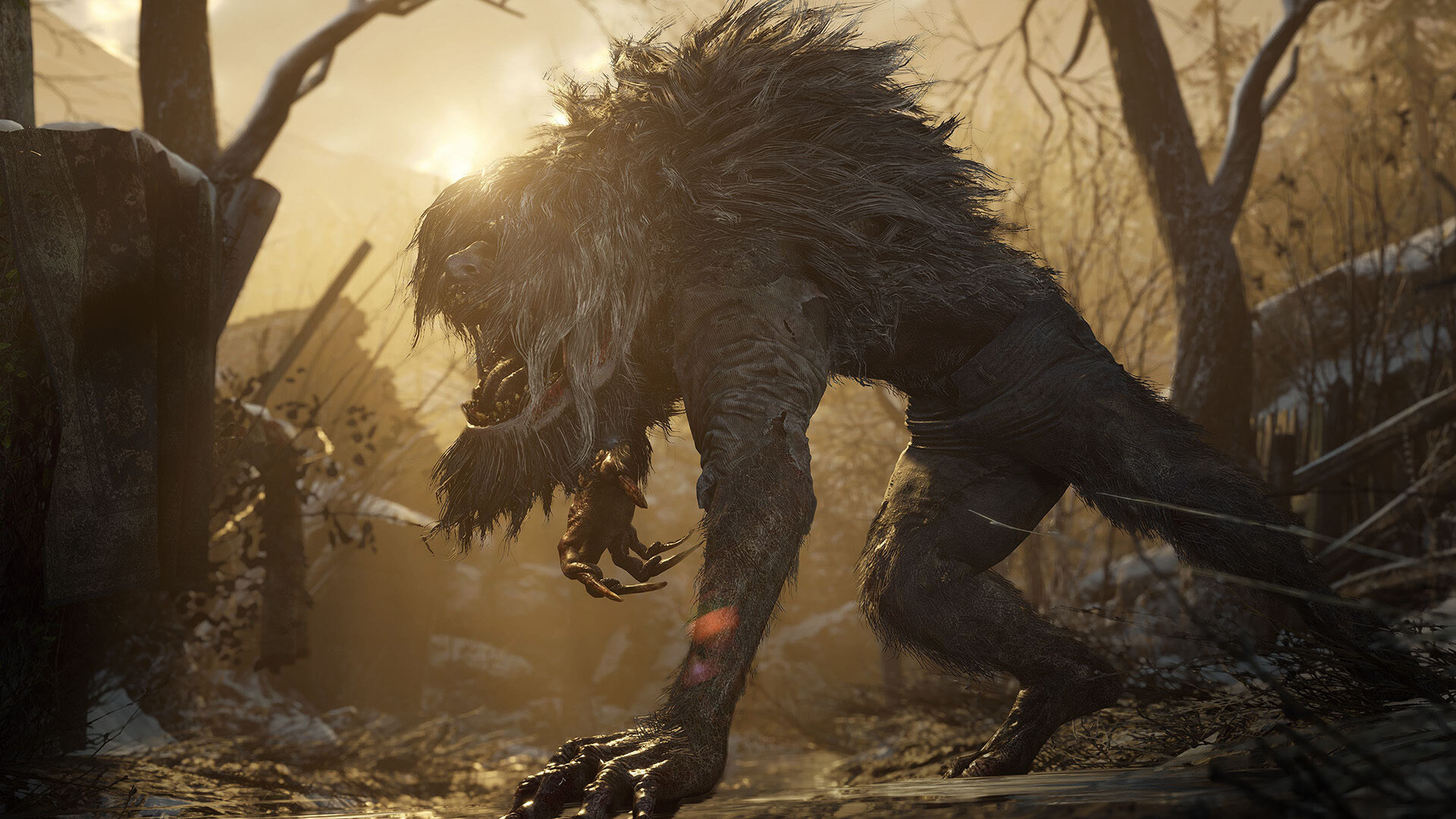
For fans of Resident Evil 7, the bigger issue might be the sheer amount of escalation at play. I’m not going to pretend like RE7 was wholly grounded or realistic in any serious way, and the final two boss fights were certainly over the top. But the story still managed to feel small, focused, and human in scale, as did the central twist on which the story hinged. Village, by comparison, just goes unbelievably hard in every imaginable direction. We’re not quite back to the days when Chris Redfield QTE-wrestled a boulder inside an active volcano, but the series’ zany factor is certainly back in full swing.
To get into any specifics would spoil too much, but I’ll say this: After playing through the first 45 minutes or so, I told my fellow EGM editors that the intro was absolutely bonkers. Looking back now, having finished the game, those early moments feel downright tame by comparison. The closest metaphor I can think of is if Marvel had gone straight from 2008’s Iron Man to Avengers: Infinity War with nothing in between. That’s not a knock on its quality, per se, but I’m not sure it’ll be to everyone’s tastes. If one of the things you loved most about RE7 was its smaller scope, you may be a bit let down here.
Still, a little time with the gameplay of Village is all it takes to understand why Capcom decided to go bigger this time around. It’s gratifying to experience how Village expands on the tenser and more deliberative combat it established in the last game. This is still a survival horror experience where every bullet you fire matters and missing a crucial headshot can be as terrifying as any jump scare.
Like the Baker ranch in Resident Evil 7, Village’s, well, village is broken up into discrete sections designed to channel the personality of the boss characters you’ll face at the end. Capcom has made significant strides here over the last game in distinguishing these areas from one another, with distinct environments, enemies, and gameplay focus that highlight its almost episodic nature. Castle Dimitrescu feels like classic RE, with frantic exploration of a single location while you’re relentlessly pursued by an unkillable foe. One area channels the puzzle solving and powerlessness of Amnesia: The Dark Descent to great effect, while another feels like a more straightforward combat gauntlet. There’s a great deal of variety packed into the game’s dozen-hour runtime, and it’s all the better for it.
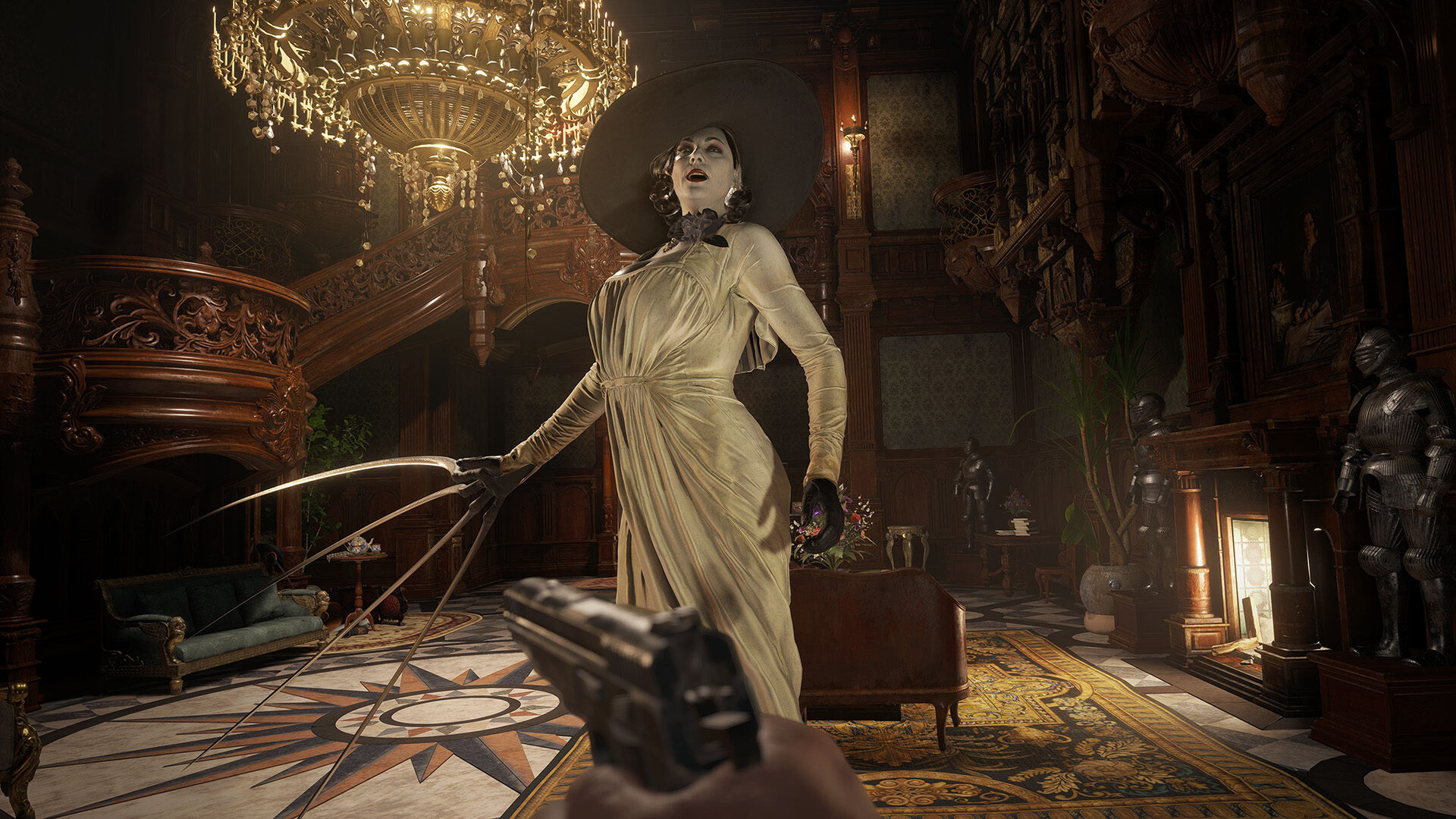
Unfortunately, this design approach also has one major shortcoming: If the unifying idea of an area doesn’t work, you’re going to be stuck with it for a good while before Village mixes things up again. In my opinion, one late-game area in particular doesn’t stack up to the rest. I have to assume its map is intentionally confusing, mazelike, and largely featureless, but intention doesn’t make up for how much of a slog it becomes. Long on backtracking and short on personality, it’s a disappointing stretch that deflates momentum just when the game should be building toward a climax.
In addition to a wider variety of enemy types, there are a few major additions to the core gameplay, many of which evoke previous Resident Evil games. In certain locations, you can now barricade doorways to give yourself more time and space to fend off attackers. When it works, it really does feel like you’re under siege, trying to blast enemies down from boarded-up windows before they can break in.
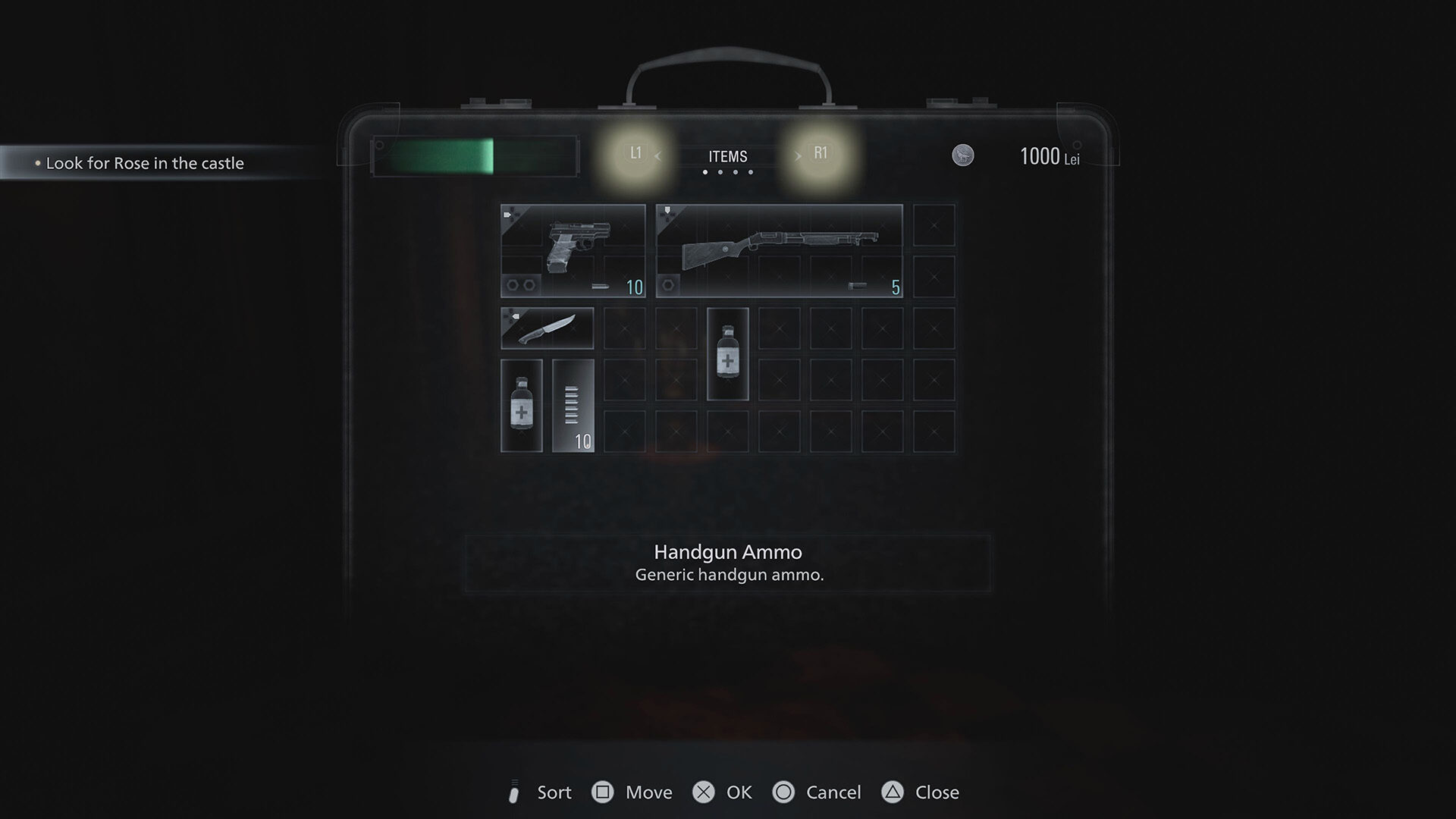
The game also reintroduces a grid-based inventory system, with a limited number of spaces and items that take up a different number of squares. If you pour the money you earn into upgrades, you probably won’t butt up against your inventory size too often, but you may need to sell off some of the older guns you’ve stopped using to make room for new ones, and you’ll definitely need to play a little Inventory Tetris in the late-game to make everything fit.
Rounding out the major additions to gameplay is the Duke, a mysterious merchant who follows you around on your adventures, buying valuables you find and selling items, as well as character and weapon upgrades. To state the obvious, Capcom has made a few questionable calls in designing his character. He’s morbidly obese to an extreme degree, and the game frequently flirts with using it as a source of humor. You’d think a man of wealth and taste might be able to afford a suit that fully covers his stomach, but no, he just lets it hang out. Could it have been far crueler? Sure, there’s some definite restraint at play here. But a shining example of body positivity the Duke is not.
The Duke’s massive appetite also ties into the game’s new hunting system, as he can make dishes using the meat from animals you kill out in the world. Though the upgrades are a nice way to make Ethan more survivable in the late game—you can increase your movement speed, max health, and the damage reduction you get from guarding against attacks—the hunting itself isn’t much of an addition to the game. It’s not really a step towards a robust open world in the vein of, say, the Far Cry or Red Dead games. Instead, the animals you hunt are just another kind of item pickup, hidden in specific locations around the map with a limited quantity available per playthrough. Given that they’re all penned into a specific area and it’s trivial to kill them with your knife, there’s not even much of a risk-reward tradeoff at play. Even if you use some of your limited supply of bullets, the upgrades you can unlock are so significant that it’s a no-brainer.
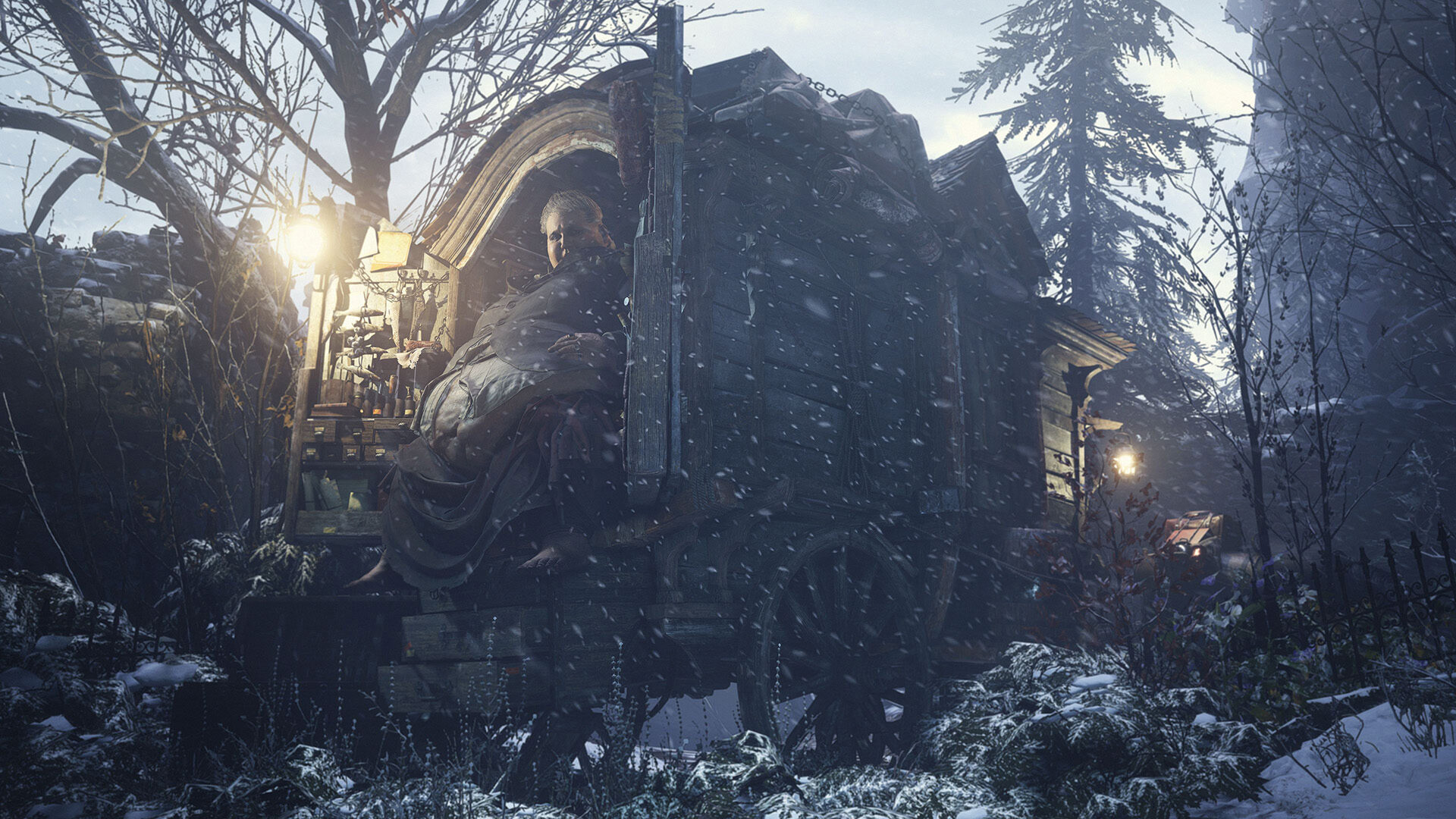
In another holdover from RE7, Village also puts a great deal of thought into ways to encourage you to return after your first playthrough is complete. There’s a robust challenge system, through which you can earn points to unlock additional weapons and infinite ammo for the guns you already have. Since all of this feeds back into the main game without disabling your ability to complete challenges, it’s a great way to make repeat playthroughs on higher difficulties more accessible. In normal circumstances, I’d probably never even bother to try to beat the game in under three hours. With a challenge tempting me to, I might well try it once I’ve unlocked infinite ammo for the game’s most powerful weapons.
The bonus system is also how you access the returning Mercenaries mode, which focuses on clearing out closed-off maps based on areas from the main game in a score-based time trial. Kill enemies, and you’ll earn extra time. Get kills in quick succession, and you’ll build up a combo that raises your score and time bonuses.
The core loop works better than you expect given the relatively slow-paced first-person combat, but it doesn’t work quite as well as it needs to. It’s great fun to try to chase the S rank in some stages. In others—like the more challenging stages that take away all automatic weapons—it’s a trigger-finger-punishing drag.
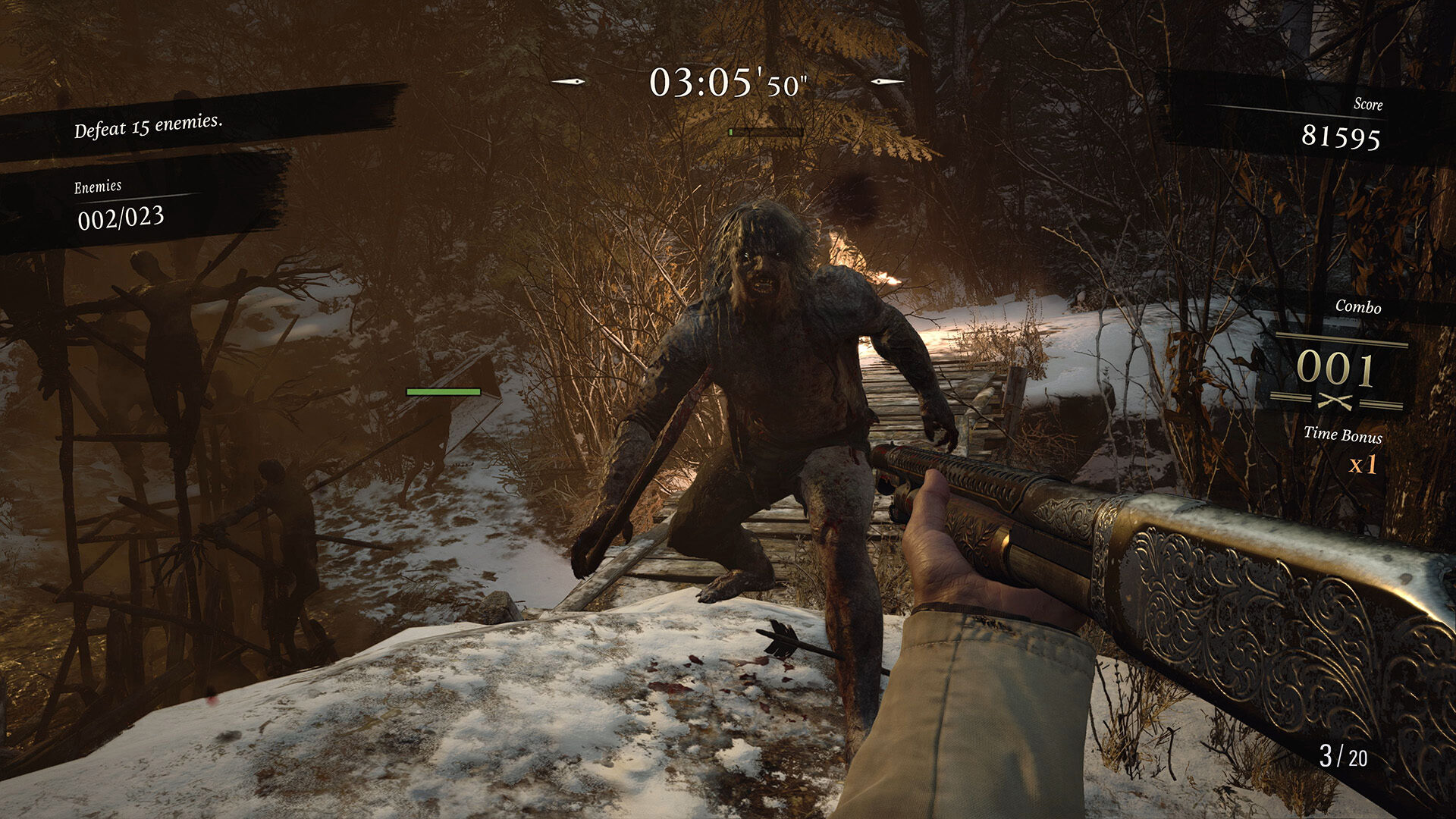
By placing shopping phases between rounds and having enemies drop currency on death, Capcom seems to want to enable different strategies for success; in practice, the relatively limited amount of ammo you can find and the hard cap on how much money you can earn to spend on weapons and upgrades feels more limiting than anything else. I always found the best success by just pouring upgrades into the best handgun I had available. And since more difficult enemies take so many bullets to take down and movement is relatively slow, building up a combo is much less about thinking on your feet than finding the one optimal route through a stage and executing it well. I imagine most players will get some enjoyment out of the mode, but it doesn’t feel like the kind of thing you’ll keep coming back to over and over.
Still, despite its handful of missteps and missed opportunities, Resident Evil Village truly does feel like a culmination and expansion of what RE7 promised us as a reinvention of the series. By starting from a more expansive view of horror, Capcom has brought back a sense of the unexpected. When you wrap up Village, you’re not just thinking about what you’ve played, but wondering, with no small measure of excitement, where the series goes from here. What does Village’s (fittingly bananas) post-credits teaser mean for a sequel? What kind of horror will Capcom tap into next? After zombies and fungus and werewolves and vampires, anything seems possible.
For a franchise that’s now a quarter-century old, that’s not a bad place to be.
All images courtesy of Capcom.
|
★★★★☆
Resident Evil Village expands the pared-back, first-person gameplay of Resident Evil 7 into a more ambitious and over-the-top survival horror experience. Greater variety and more mechanical depth prove that there’s a lot of potential left to explore in this new approach to the series, but some elements are a bit uneven, and you may find yourself missing the simplicity of the Baker ranch. |
Developer Capcom Publisher Capcom ESRB M - Mature Release Date 05.07.2021 |
| Resident Evil Village is available on PlayStation 5, Xbox Series X/S, PlayStation 4, Xbox One, PC, Stadia. Primary version played was for PS5. Product was provided by Capcom for the benefit of this coverage. EGM reviews on a scale of one to five stars. | |
